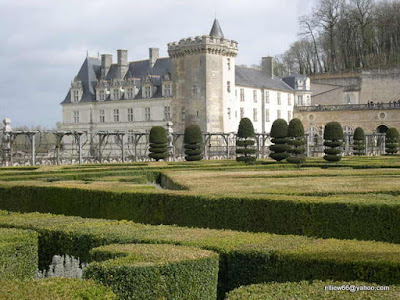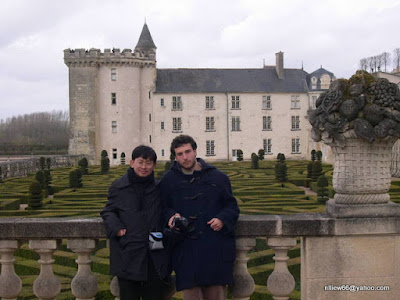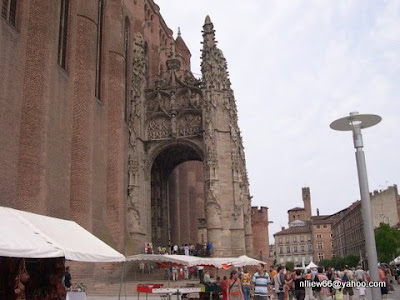One cold and rainy spring morning in 2004, I arrived at the Chateau de Villandry with a busload of my coursemates on a cultural discovery trip organized by the university. We visited three chateaux over 2 days on the Loire Valley: the other 2 being the magnificent Chambord and the historical Amboise. I returned to Villandry again on 2007, unfortunately on another cold and even rainier morning... After 5 years of memory distilled by time, the only thing that sticks in my head about Villandry is the incredible neatness of the garden in a cold, wet and miserable morning as well as the violet flavoured sorbet ice-cream sold at the entrance...
Villandry did not start its life as a royal chateau like Chambord and Amboise but it does have an illustrous history- it was initially built over a 12th century medieval castle, finished in 1536 by Jean le Breton in the Rennaisance style (he was the finance minister to Francois I, king of France and owner of the Chambord and Amboise). The chateau changed ownership to the Marquis of Castellane in 1734 before being bought over by Dr. Joachim Carvallo in 1902. He spent his life restoring the gardens of the Villandry into its glory seen today according to the rigid style of the traditional French philosophy in gardening: perfect symetry. His work was among the first efforts in France to restore patrimonial heritage for the grand public.
Villandry did not start its life as a royal chateau like Chambord and Amboise but it does have an illustrous history- it was initially built over a 12th century medieval castle, finished in 1536 by Jean le Breton in the Rennaisance style (he was the finance minister to Francois I, king of France and owner of the Chambord and Amboise). The chateau changed ownership to the Marquis of Castellane in 1734 before being bought over by Dr. Joachim Carvallo in 1902. He spent his life restoring the gardens of the Villandry into its glory seen today according to the rigid style of the traditional French philosophy in gardening: perfect symetry. His work was among the first efforts in France to restore patrimonial heritage for the grand public.










My housemate Roman
Visit the chateau at this link:
http://www.chateauvillandry.com/sommaire.php3?lang=fr&HPSESSID=a90762ccb1538f877fd052c6a99b839e









































